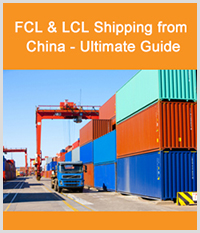 When bulk goods need to be transported, ocean shipping is the best method to save yourself the huge costs incurred when using air-freight.
When bulk goods need to be transported, ocean shipping is the best method to save yourself the huge costs incurred when using air-freight.
Depending on your order quantity and the products value, you need to choose from either FCL or LCL when shipping from China.
Perhaps you don’t realize that shipping a 20ft container is cheaper than a 15CBM LCL shipment.
In this article I’ll you all the information you need to make the most informed choice for your circumstances.
What Is FCL & LCL Shipping from China?
Definition:
FCL: Full Container Load
LCL: Less than Container Load
What Is FCL
If you only want your goods to be in the container, opt for the FCL option.
In other words, when you book a FCL, it completely belongs to you.
You can use it in any way you desire, maybe stuff the container until it’s full or leave it half empty, it’s entirely up to you.
FCL come in three standard sized containers:
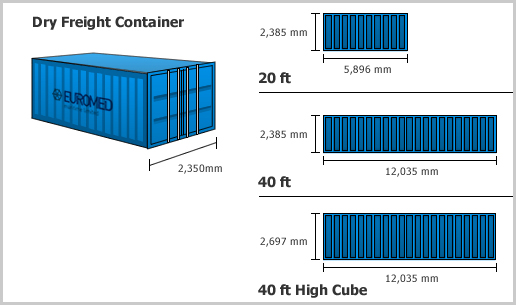
(dry-container-type)
20ft container with a volume of 26 cubic meters
40ft container with a volume of 54 cubic meters
40ft high cube with a volume of 68 cubic meters
What Is LCL
If your order quantity is too low for a FCL to be a viable option, a LCL is used.
In short, LCL is like sharing one house with multiple tenants.
More resources:
The 12 Different Types of Shipping Containers and Their Application
FCL and LCL, Which Should I Choose for Shipping from China?
To choose the right option when shipping from China, considering the pros and cons for both FCL and LCL is necessary.
Hence:
I’ve listed out the main advantages and disadvantages in the following table.
Advantages of FCL:
Lower risk. Less risk of damaging goods, cost-savings on packaging due to less handling, and it’s your own private space.
Consolidation time. More freight consolidation time is saved when using FCL.
One container is opened once, loaded and is sent to the port straightaway.
Easier to utilize space. Utilizing the available space in a FCL is easier when you have a large volume of goods to be shipped from China, and if your container is not full, you can buy some volumetric products to fill up the container.
Tracking service. Using FCL for shipments from China enables the use of tracking services.
You can check the current location and the expected delivery date by the container’s number.
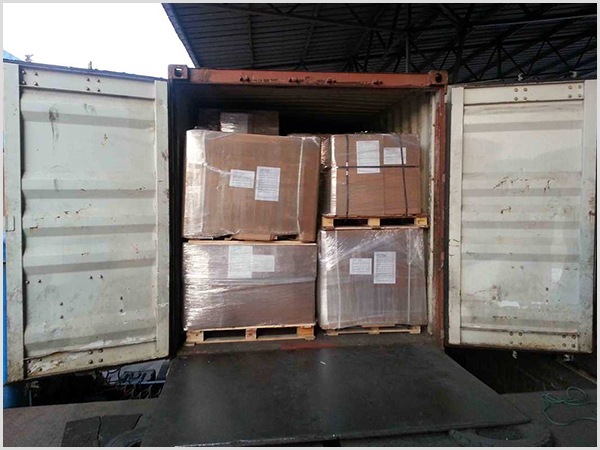
(Loading a full 20ft container)
Disadvantages of FCL
Not cost effective. It’s not cost effective enough when shipping a lower CBM, such as 10CBM.
However, when shipping more than 15 cubic meters (in a 20ft GP container), ordering a full container is more cost-effective.
You need to be using at least 50-70% of a container’s volume.
Advantages of LCL:
Cheaper for Low Volume. It’s a viable option for lower volumes to be shipped from China.
Especially for those of you who want to ship a volume as low as 2-3 cubic meters.
Lower financial risk. If you are new to importing goods from China, you may want to import a small quantity in LCL first, so that you can check the quality of the product.
This helps you to save on costs before ordering a large consignment.
Disadvantages of LCL:
Higher Per CBM Price.
Compared to FCL, the price is higher per CBM.
For example, if your shipment volume is around 15 cubic meters, the LCL price for a 20ft container (26CBM) will be higher than if you booked the entire container to yourself.
Higher Shipping Risk.
When sharing the container space with others, you can’t ensure that heavy, sharp, or chemically abrasive goods are separated, and consequently there is a higher risk of damaging goods during shipping.
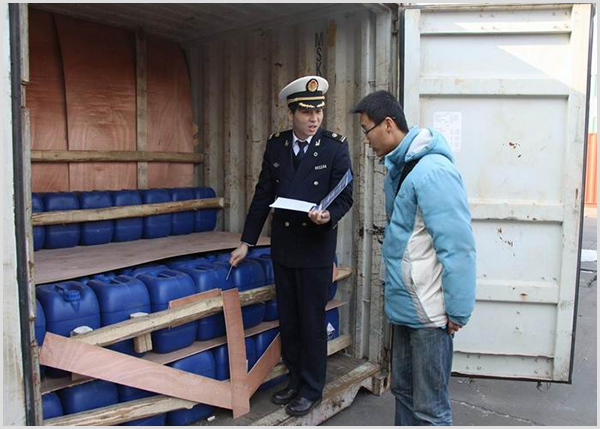
(Some forwarder will mix dangerous products with the general goods, it’s forbidden)
More Resources:
Full tracking services – Enter standard int’l shipping tracking number to check the current location of the container from China.
How to Pack Safety for International Shipping from China, Especially LCL
By now you should have a better understanding of LCL and FC, so let’s focus on another fundamental area of international shipping from China—Packing.
The following suggestions have been proven to be effective:
Use 5 ply corrugated carton or honeycomb carton.
Some Chinese suppliers will use thin boxes to save money, but obviously, poor quality boxes are very easily damaged during such a long journey across the sea.
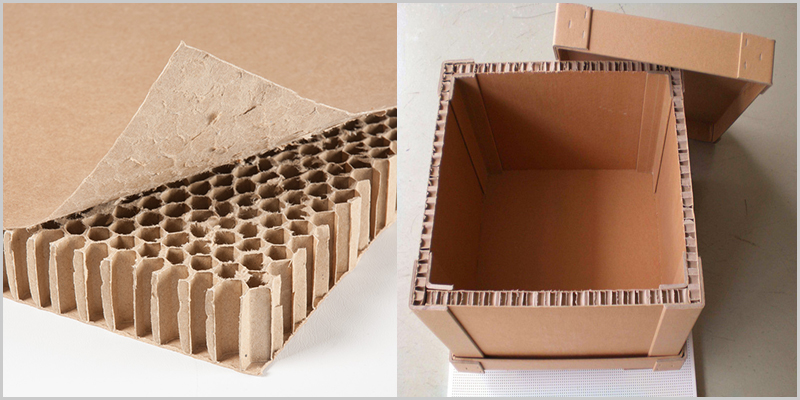
(For high value electronic product, honeycomb carton is the best choice)
When it’s a LCL shipment, it’s especially important to do this to reduce the risk I mentioned earlier when your goods are packed with other importer’s products.
If your products are fragile or very heavy, a pallet is necessary. Consider the following:
Pallet Material.
There are many different kinds of pallet materials: paper, wood, metal,plastic etc.
Not only wooden pallets, but all wooden packing, such as wooden boxes, require that you provide fumigation certification.
You need to stick an International Plant Protection Convention (IPPC) label in each box.
Almost all developed countries’ customs have requirements that wooden packaging come with an IPPC label before entry is granted.
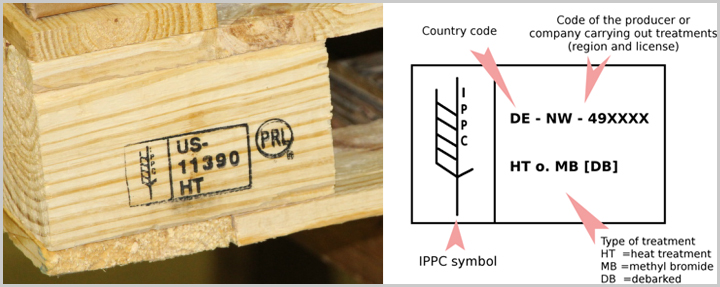
(IPPC label)
In many cases, people who want to save time and avoid fumigation will use non-fumigation pallets, which are made with plywood and don’t require a fumigation certificate.
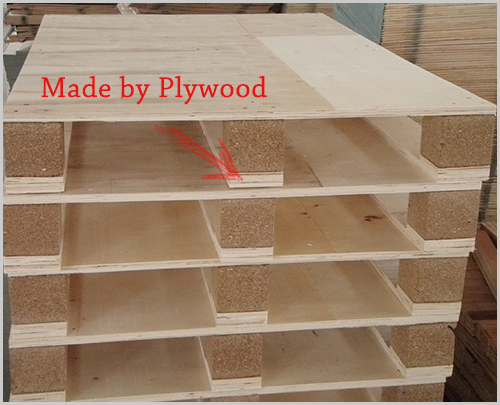
(Plywood don’t have pest problem)
If the products on the pallet are very heavy, you can choose a good quality wooden pallet, because the weight capacity is higher than a plywood pallet.
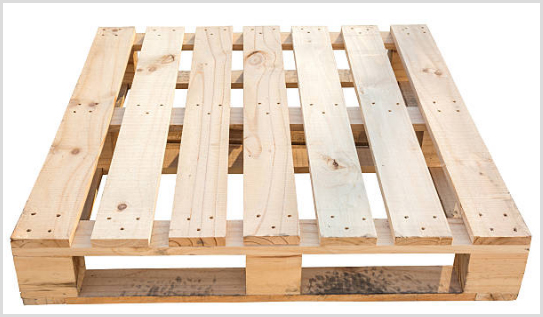
(Quality-wooden-pallet)
If it’s possible, better to add another layer in the middle to help reduce the weight on the bottom.
Use wrapping film.
After loading the products on the pallet you can cover with wrapping film to keep your goods dry, or hold them together.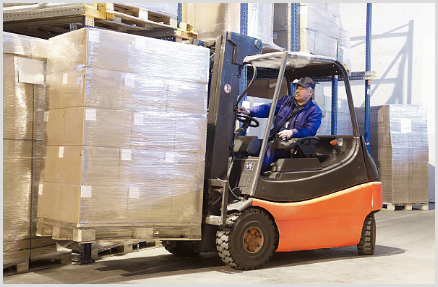
(Products with wrapping film on the pallet)
What are the rates of FCL & LCL Shipping from China?
After learning all of the basics concerning FCL and LCL, you’re, no doubt, eager to know what the shipping rates are for each.
It depends on where the shipment starts and your destination port.
The simplest method is to get a shipping forwarder to quote you.
I’ll use the nearest main port from our company as an example: Ningbo port.
(Ningbo Port)
Of course, your sea freight price will differ, this is just for your reference so that you have a basic idea of the sort of price to expect, so as to avoid unscrupulous shipping forwarders that try to cheat new importers with inflated prices.
The quote below is a sea freight charge for a full 20 ft container, not including inland fees and port charges:
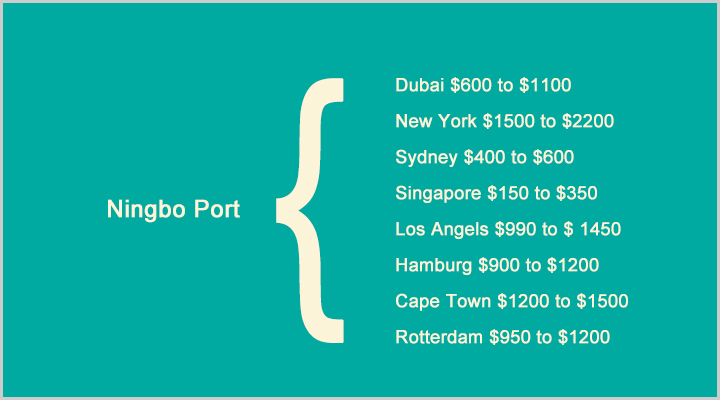
Moving onto LCL prices:
LCL prices are completely volume-based calculations.
For the average price per cubic meter, LCL rates are higher than FCL.
The inland fee and port charges also can’t be avoided.
If you need an accurate price, the fastest way is ask a shipping forwarder.
And it’s better to ask that they also include inland charges and port charges, as some shipping forwarders will quote a low sea freight cost but charge the others high.
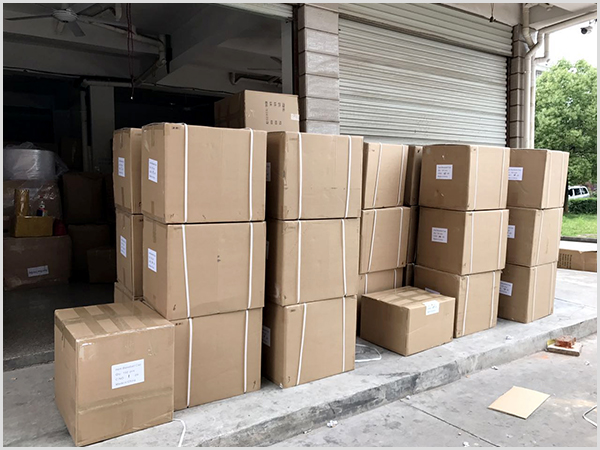
(4.5CBM for LCL shipping depart from Meeno’s warehouse)
There’s a special condition we have to mention: if your products < 2CBM, sea freight is also not cost-effective, because of the inland fee and port charges that you have to pay.
Sometimes it may be higher than using China post or some other shipping methods.
If your shipping volume is above 15CBM, consider ordering a 20ft container, because the charges will be same or even lower, and you can protect your goods better and it takes up less handling.
How to Better Control the Cost of Shipping from China?
Aside from the shipping volume, another common concern of importers is how to save costs when shipping from China.
Customize packaging.
For example, if per carton has 12pcs products, maybe you can’t ship all goods in one container, then change to a box that can put 15pcs or 20pcs, then it can be reach a best status for fill up a 20′ or 40′ container.
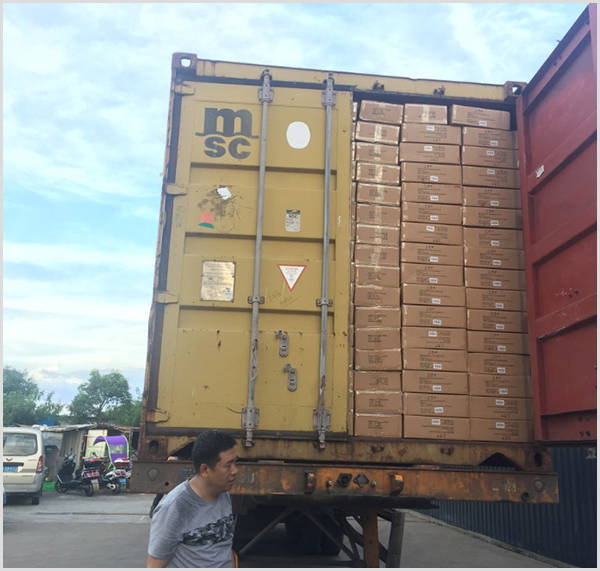
(This container can be 100% fill up, because the box size is be designed for container)
Sure, there’s another secret, and it’s pretty simple —
Use a Chinese shipping forwarder, not your native country’s forwarder.
You’re probably worried about the safety of your goods…
Yes, it’s normal feeling, because you need give all of your products to a Chinese forwarder, who you may not trust, whereas a forwarder from your native country can make you feel more at ease, and give you the impression it’s easier to keep tabs on them.
Actually, finding a reliable Chinese shipping agent is not a big problem anymore, as there are many reliable channels at your disposal:
- Check on Alibaba.
- Ask your sourcing company.
- If you’re working with a QC company then you can ask them.
- Search for more information on Google.
Certainly, some of our clients also mentioned it’s not absolutely to choosing a Chinese forwarder, for some shipping route, their native shipping forwarder has better price and service.
Conclusion
Whether you need FCL or LCL shipping from China, the most important thing to consider first is that your products arrive safely.
Ensure the goods are packed correctly and work with a reliable forwarder.
With that covered, you can concern yourself with the cost and the speed of your shipment.
Don’t forget to buy insurance for important shipments, as it can help you avert financial losses when unexpected problems happen, and it will only cost you 0.3-0.5% of the value of your goods.
Reading and understanding the FCL and LCL pros and cons will help you make the right decision for your shipment.
If you have more questions about sea freight shipping from China, please feel free to leave us a comment.
Furthering the discussion is good for everyone, and we always endeavor to respond within 2 working days.
If it’s urgent, please call us or send us an email: info@meenogroup.com

